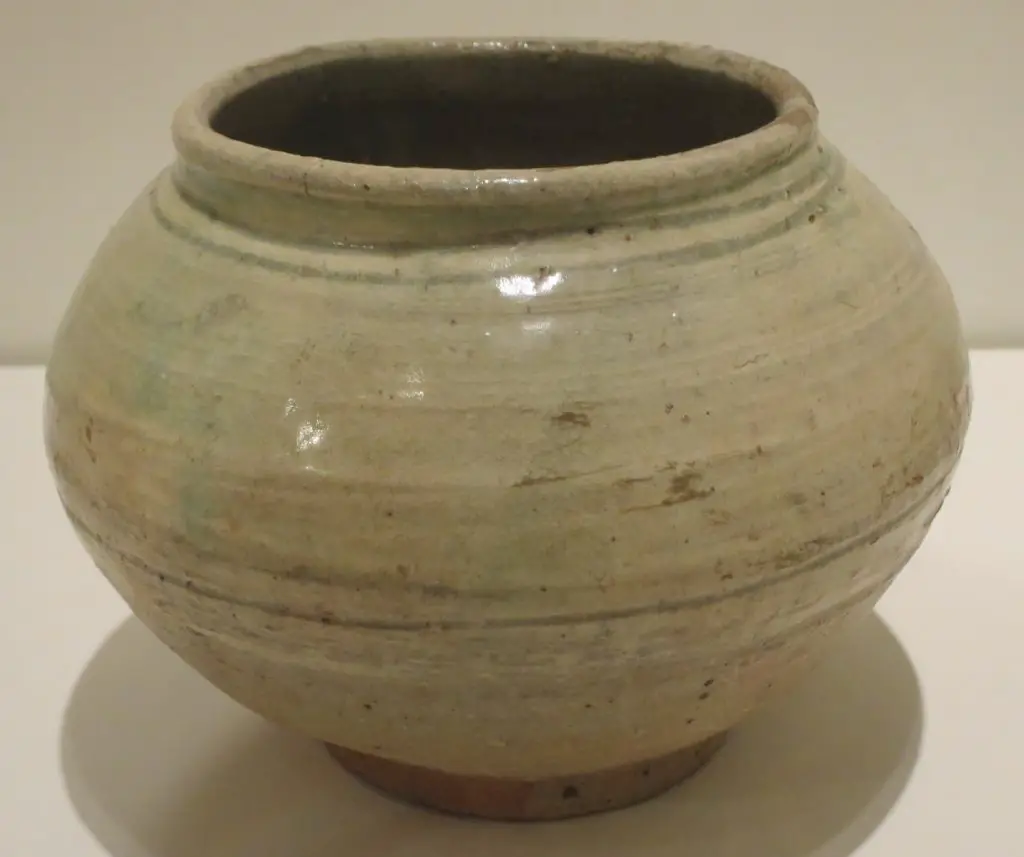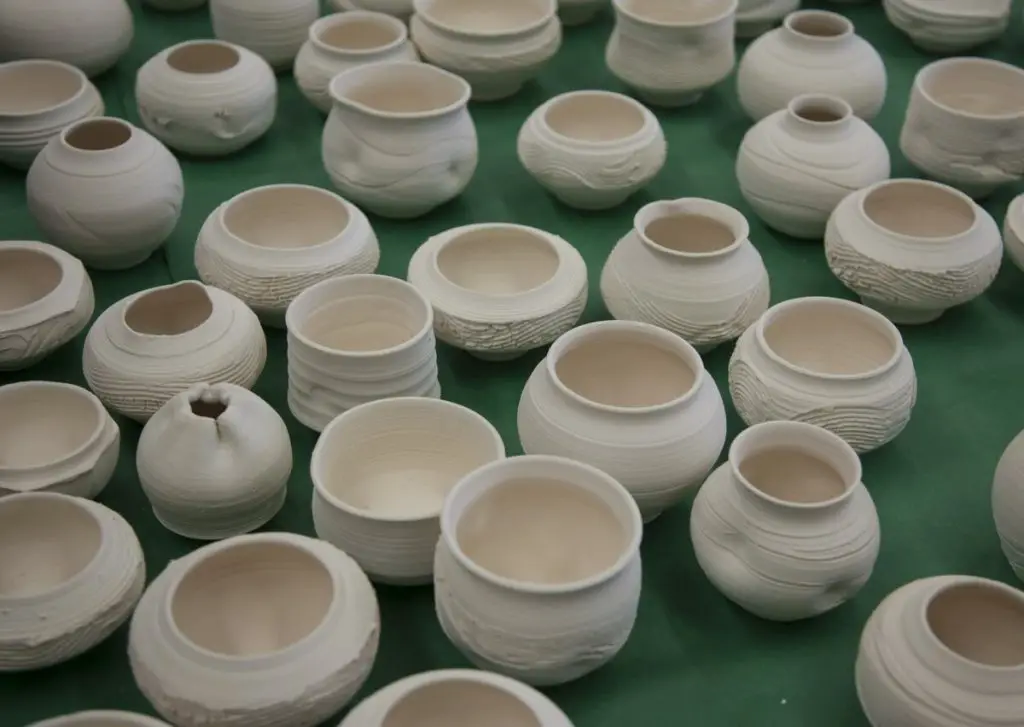Clay is an inspiring art material with the traditional past and contemporary values. It forms from igneous granite materials and other metamorphic rocks that break down into small stones due to various environmental changes. Humans have been transforming clay into the desired pattern as per their needs for ages.

However, based on the amount of metal oxide and other minerals present in the clay, it is divided into different types. And each clay type is used for a specific clay body. If you’re planning to try clay sculpting, then you have to choose the right sculpting clay. And, in order to get hands-on with the right sculpting clay, you need to understand the difference between the three types of clay bodies.
In this article, we are going to tell about different types of clay bodies and their advantages. Without wasting much time, let’s get started.
Types of Clay bodies
Currently, when you search for purchasing clay online, you may get thousands of variant clays. However, each type of clay creates a different clay body when you bake it. The clay bodies are further divided into three categories, depending on three factors,:
-
Temperature: Different clay bodies mature at different temperatures. It is the temperature at which the clay should be fired to reach its optimum hardness and durability.
-
Workability: The workability of clay refers to how easy it is to shape the clay.
-
Color: Based on the amount of metal oxide and minerals present in the clay, the color of the clay affects it.
Based on these three factors, the clay bodies are narrowed down into three categories,:
-
Porcelain
-
Stoneware
-
Earthenware
By adding or subtracting the amount of mineral into the clay, other clays-bodies are usually made. Check out this table to understand the difference between the three types of clay bodies.
Properties |
Earthenware |
Stoneware |
Porcelain |
|
Natural Types |
Terra-cotta clays |
White Clays |
Stoneware |
Porcelain |
Temperature |
Low to Mid fire1828-1945 F (Cone 04, 05, or 06) |
Low to Mid fire1828-1945 F (Cone 04, 05 or 06) |
Mid to High fire2167-2232 F (Cone 04, 05 or 06) |
High fire only(Cone 04, 05, or 06) |
Workability |
Fine-grainedCoarser appeal |
Smooth and grained |
Sharp granules, slightly coarseGrogs found |
Smooth and fine |
Color |
Reddish brown |
White |
Grey, Brown, White, and buff |
Translucent white |
What should you know about earthenware?

Earthenware is one of the basic clay-body types that is porous in nature. Due to tiny holes, it permits the flow of fluids through its pores. Since this clay is sticky and can be scratched with a knife, it is easy to work with this clay body. Earthenware clay contains a large amount of iron oxide, which gives it an orangish-red color and allows it to reach its optimum hardness at a lower temperature. However, a higher temperature will make the clay brown or even black and may cause earthenware to bloat.
Based on the ingredients, the earthenware clay body is of two types: White clay and Terracotta. As both terracotta clay and white clay require low firing temperatures, both are termed earthenware clay. However, the significant difference between these two is that white clay requires a fluxing agent to lower its firing temperature, but this is not the case with Terracotta.
Terracotta is darker in color. Hence, terracotta clay bodies can range from orange-red to a dark brown color. White clay uses fluxing agent such as talc; the items made up of this clay is light in color. Apart from this, white clay is mainly used for commercial purposes, while Terracotta is used for cookery.
Advantages of earthenware
-
Earthenware is inexpensive.
-
It is easy to work with this clay. Hence, you can get them in different shapes and sizes.
-
These pots are heat resistant and can maintain temperatures for quite a long time.
-
Scraps and unfired pieces can be reclaimed by soaking them in a bucket of water
-
Low shrinkage when you put this clay in a fire
-
Great for planters, kid’s projects, and decorative items.
How is stoneware clay made?
Stoneware is found to be one of the hard and durable clay materials. This clay is grey when moist. Its color may range from chocolate brown to light brown when fired. Stoneware bodies have a 2 to 5% absorption factor, and hence you can bake stoneware bodies at a relatively higher temperature than Earthenware clay. Its temperature may range from 2100 degrees to 2372 degrees F.

As the name suggests, the items made up of stoneware clay are hard and exhibit a stone-like structure. Potters apply glaze to stoneware before the last firing stage to add strength, and color and enhance its beauty. As a result, it gives a glass-like layer over the clay.
Since stoneware bodies are hard, this clay is ideal for functional appliances. Industrial ceramics are one of the best examples of their usage. Apart from that, this clay is used as dinnerware, jugs or crocks, and coffee mugs.
Advantages of Stoneware
-
Stoneware has stick-resistant properties, which makes it ideal for manufacturing cooking utensils.
-
The heat resistance capability of stoneware bodies is high. Hence, stoneware clay bodies are mainly used in the bakery for their multipurpose nature. Check out the Krokori Bakeware set that comes in different sizes and is suitable for home baking purposes.
-
It is always known for its durability and visual appeal. Stoneware bodies do not crack up quickly and give an attractive aesthetic look at the dinner table.
-
Cleaning and maintaining the stoneware utensils is also quite easy.
How is porcelain different?

Porcelain usually refers to ceramic material. Compared to the other clay types, it is heated at the highest temperature of 3273 degrees F. It is generally translucent because of its high kaolin content and lack of other ingredients like iron. Also, porcelain clay is non-porous, non-sticky, and the most expensive clay.
Its water absorption rate is 0-1%. Since it has low plasticity content and cracks and deforms easily, it is difficult to work with this type of clay. Since it is the purest form of clay, its color is always white. In order to change its color, you have to add other types of clay porcelain. Adding other clays to it will also increase workability and lower its firing temperature.
Advantages of Porcelain
Almost all restaurants and their kitchen depend on porcelain utensils. They make the food presentable and bring ‘fancy’ to the table. The tea and coffee are usually stored in porcelain pots for maintaining the heat for hours together. Even today, products like Sweese Porcelain teapots are extensively used at homes.
They not only provide a classy look at the dinner tables but also to the entire house because you can find the intricate designs of porcelain articles like pen stands, paperweights, clocks, and more.
Porcelain is widely used in dentistry for making impressions to create caps and crowns. The life-like tooth restorations made of these materials are quite popular.
FAQs
What are clay bodies?
Clay body refers to the actual clay mixture that is used in the manufacturing of clay objects. It can have only one type of clay, but usually, potters use various kinds of clay mixtures.
What is the best clay for pottery?
The higher the maturing temperature, the more durable and waterproof the ware will be. Hence, porcelain and kaolin clay are considered the best clay for pottery.
Where is earthenware clay found?
Earthenware is a type of clay that requires the lowest firing temperature. It is usually found in nature. It is best for the manufacturing of tiles, bricks, and pottery products.
Conclusion
This article would have given the classification of clay bodies in detail. In early civilization, potters go to the riverbed and collect the deposited clay. They create various items using the basic types by segregating the clay, but today’s process is refined. Today, different types of clay are available in the market, and potters can easily purchase the desired clay type from their nearby craft stores or online.
So, if you are also looking forward to trying clay sculpting, choose the best clay body as per your skill level and project. For more information, stay tuned and get in touch with us.






